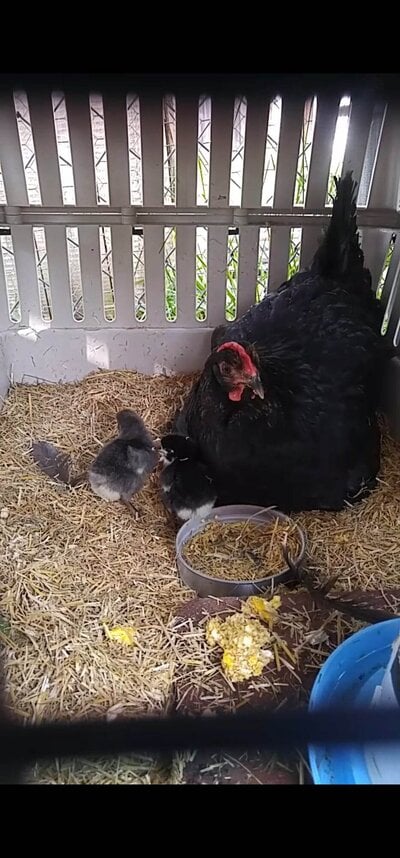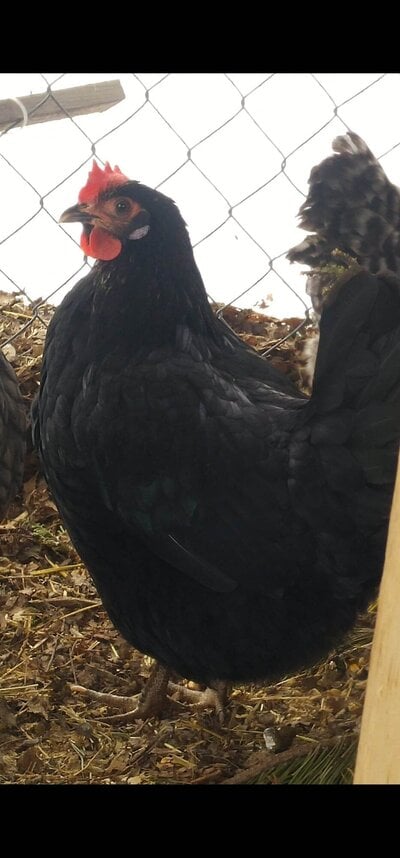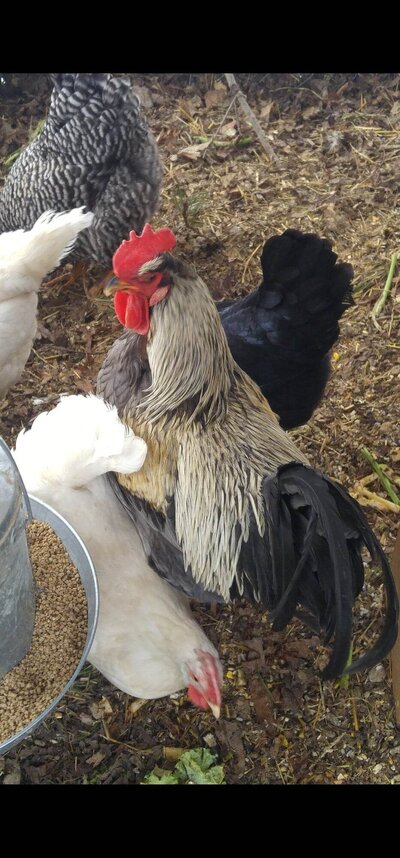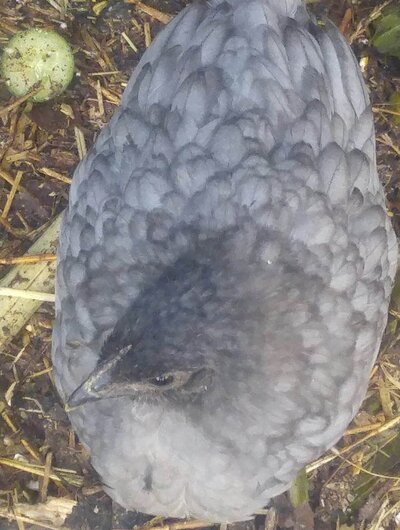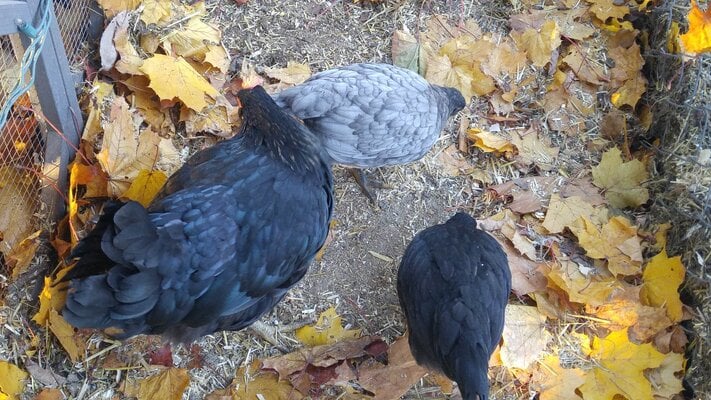ChokeCherryLane
In the Brooder
- Mar 21, 2022
- 7
- 0
- 10
Hello! Newbie here. I have a pair of Isbars. The Roo is Blue. The Hen is Black. She is deemed a "dud" as they say - as no green eggs - only speckled brown (which I read is a possibility for this breed). My question to those who know this breed is this: What egg colour do you think I would get if I cross my Blue Isbar Roo with A - my Blue Azure hen, B - my barred rock hen, or C - my brown laying Black Isbar hen. I wasn't planning on C - but after reading a blue egg layer must meet a brown to produce green - I wondered if I shouldn't try it. Thoughts? Input? (I would really like to add a green egg to my basket. (and what would you call the result? Would they be deemed an olive or easter egger??) Thanks so much! So much good info on this site - and I've looked everywhere for this - but couldn't find. (So thought I'd post).




 I am told he his pure and the woman I got them from was beside herself that the hen doesn't lay green (she had other green layers in with her). They were too cozy a pair to return her. I have read that this can happen though. Sadly. Would the product of this pairing be considered an olive egger?? If he mates with an Azure Blue or Barred Rock?? I am not familiar with that. Also, if he is placed over his mate (who lays brown) then they could possibly produce a pure green layer correct? Sorry for all the questions - I have no one in my circle who cares about all this stuff!
I am told he his pure and the woman I got them from was beside herself that the hen doesn't lay green (she had other green layers in with her). They were too cozy a pair to return her. I have read that this can happen though. Sadly. Would the product of this pairing be considered an olive egger?? If he mates with an Azure Blue or Barred Rock?? I am not familiar with that. Also, if he is placed over his mate (who lays brown) then they could possibly produce a pure green layer correct? Sorry for all the questions - I have no one in my circle who cares about all this stuff! 